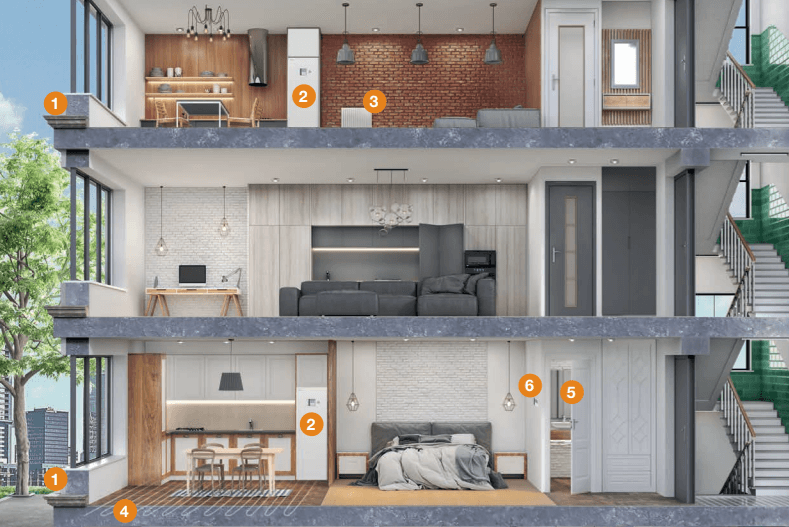Blog
How does an air-to-water heat pump actually work?

HOW DOES AN AIR-TO-WATER HEAT PUMP ACTUALLY WORK?
Refrigerant circulating in the system transfers and transports heat -> in the evaporator (outdoor unit) the liquid refrigerant changes state and in doing so stores the energy received -> the compressor brings the refrigerant to a higher pressure and temperature level.
An air-to-water heat pump extracts energy from the air and transfers it to the heating system. This function is taken over by an environmentally friendly refrigerant and an efficient compressor. The heat generated in this process is transferred to the water system via a heat exchanger. In this way, the domestic and heating water is heated to the desired temperature. This energy-saving system operates efficiently even in outdoor temperatures as low as -25°C.
100% ENERGY FROM AIR
On average, an air-to-water heat pump heats with a 4:1 ratio of air to electricity. This means that 1 kWh of current provides on average 4 kWh of heating power. A space-saving, efficient and sustainable system compared to conventional heating systems.
Now the very hot refrigerant flows into the condenser (indoor unit), a heat exchanger, in which the ambient temperature gained is transferred to water -> by cooling again, the liquefied refrigerant can reabsorb the ambient heat through the expansion valve when the pressure and temperature drops and the cycle starts again from the beginning.


